G u m b a l l P r o j e c t - T h e P u l l m a n S t r i k e (working page)


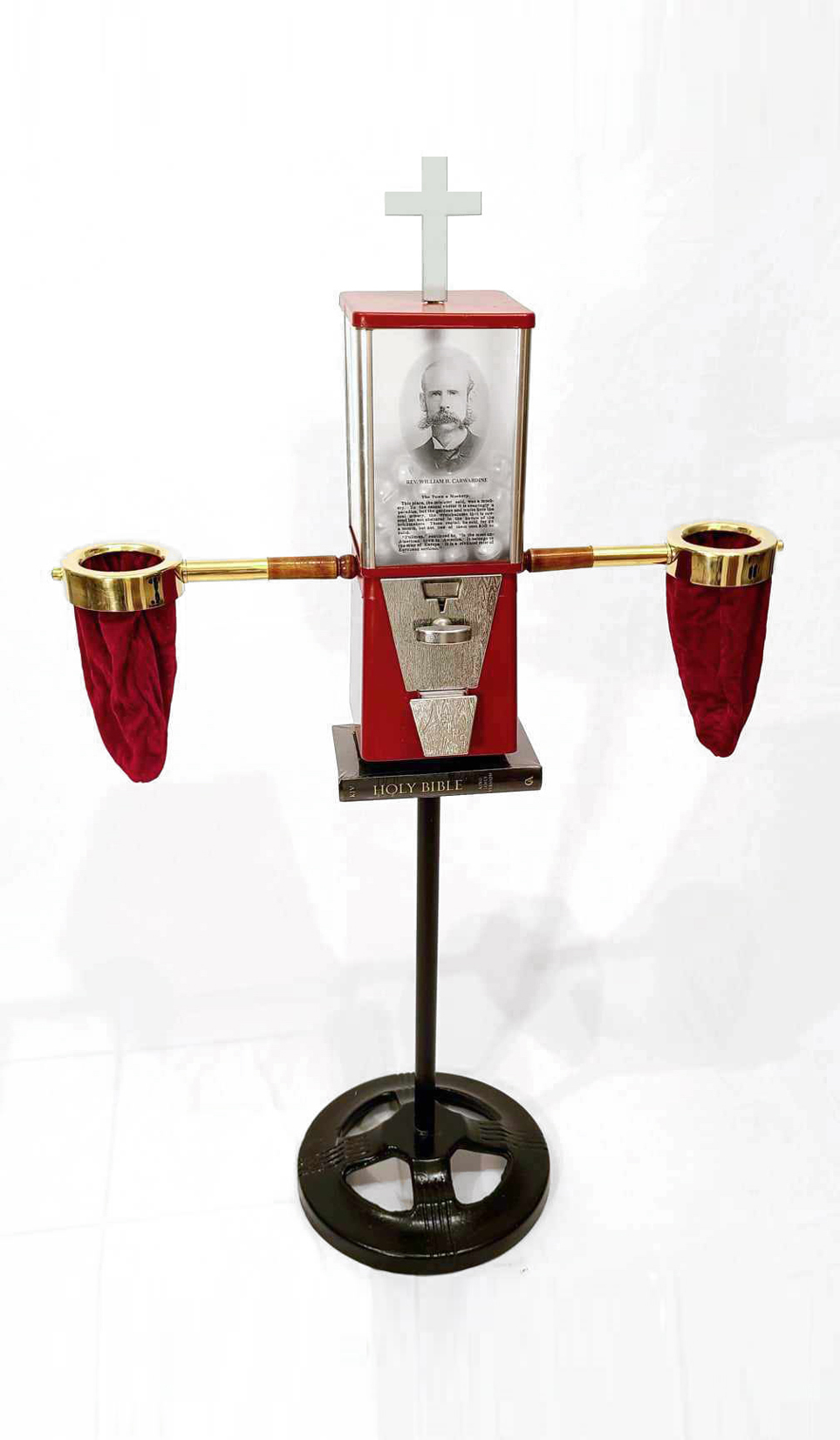
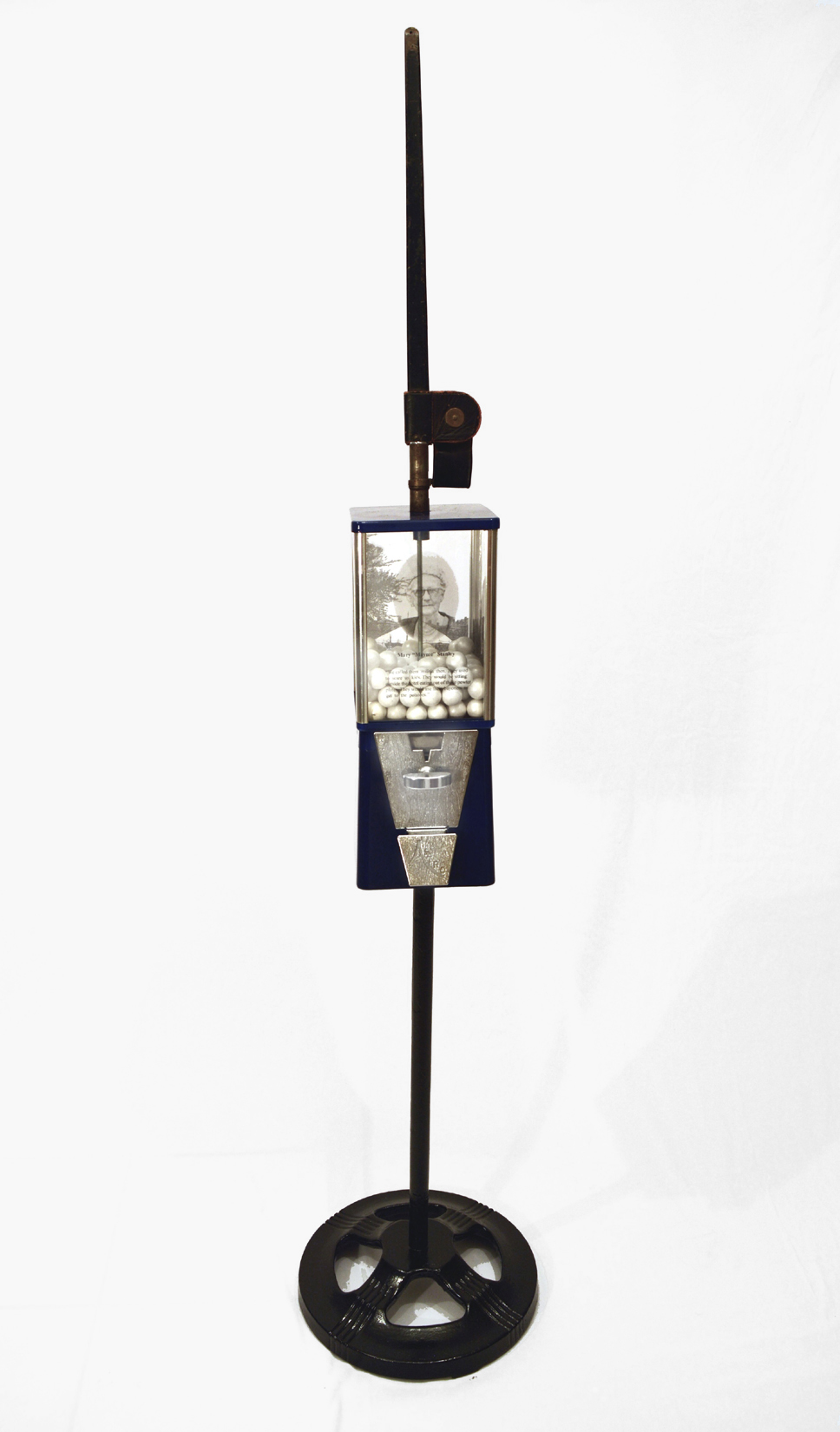
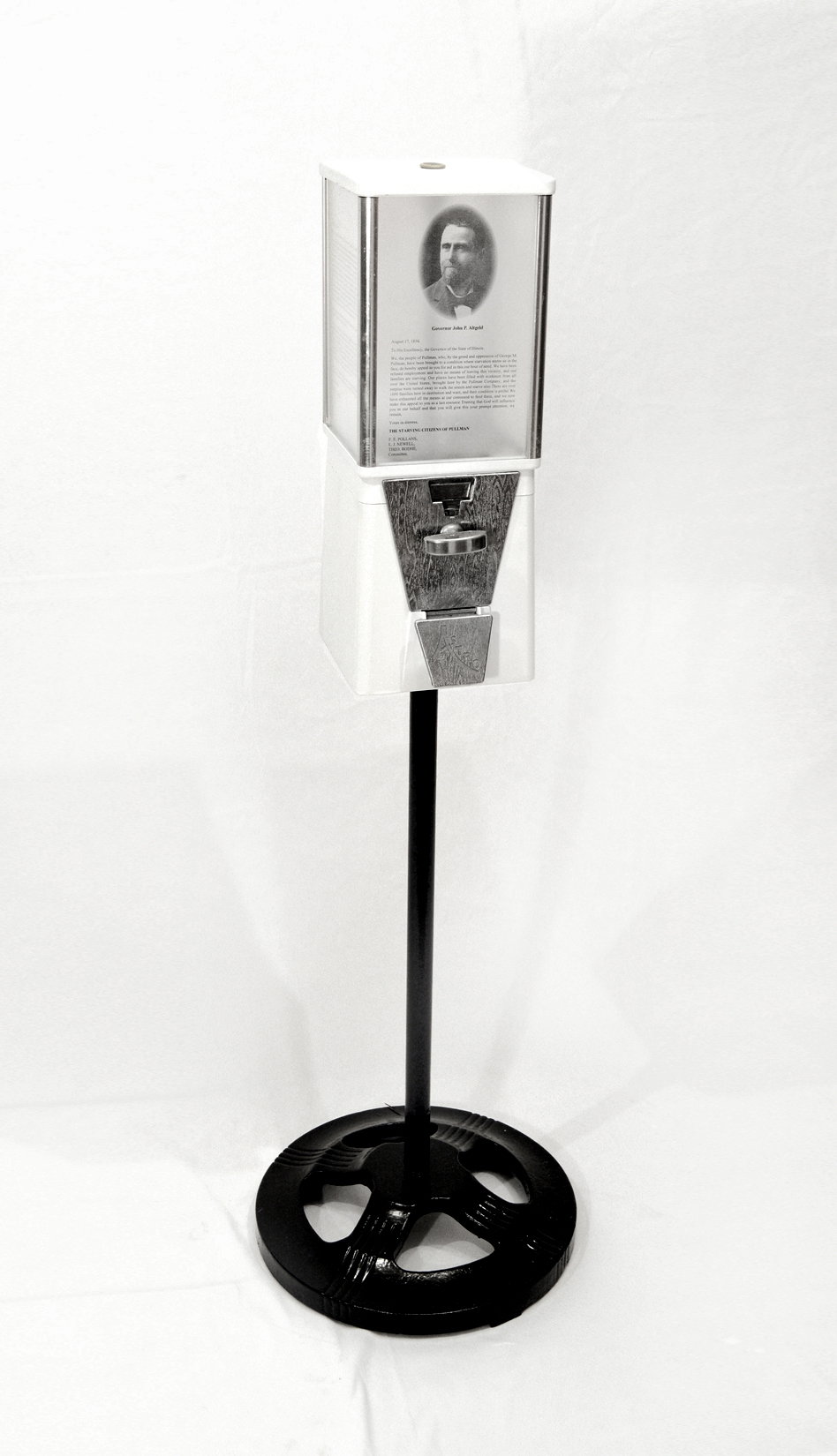
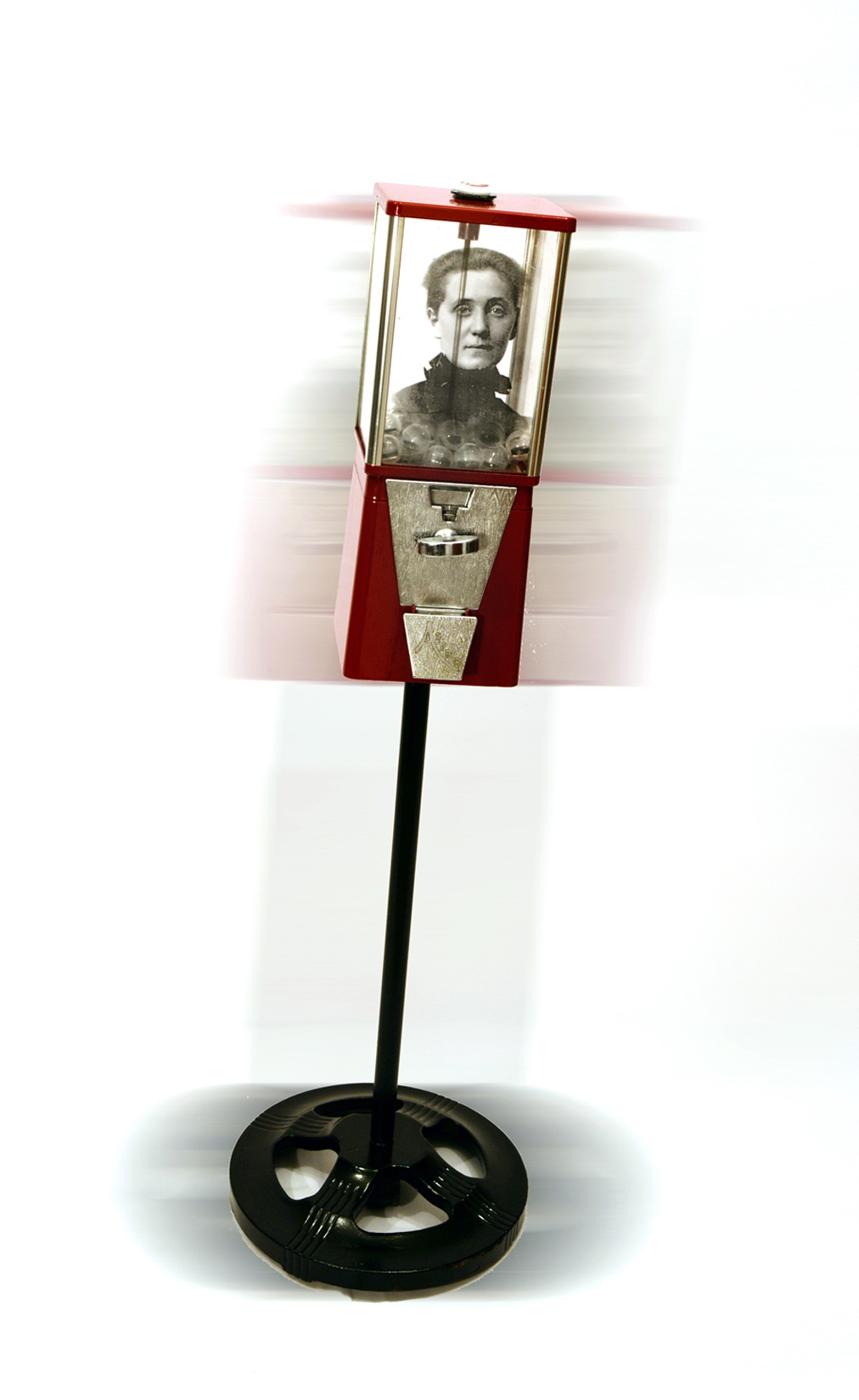
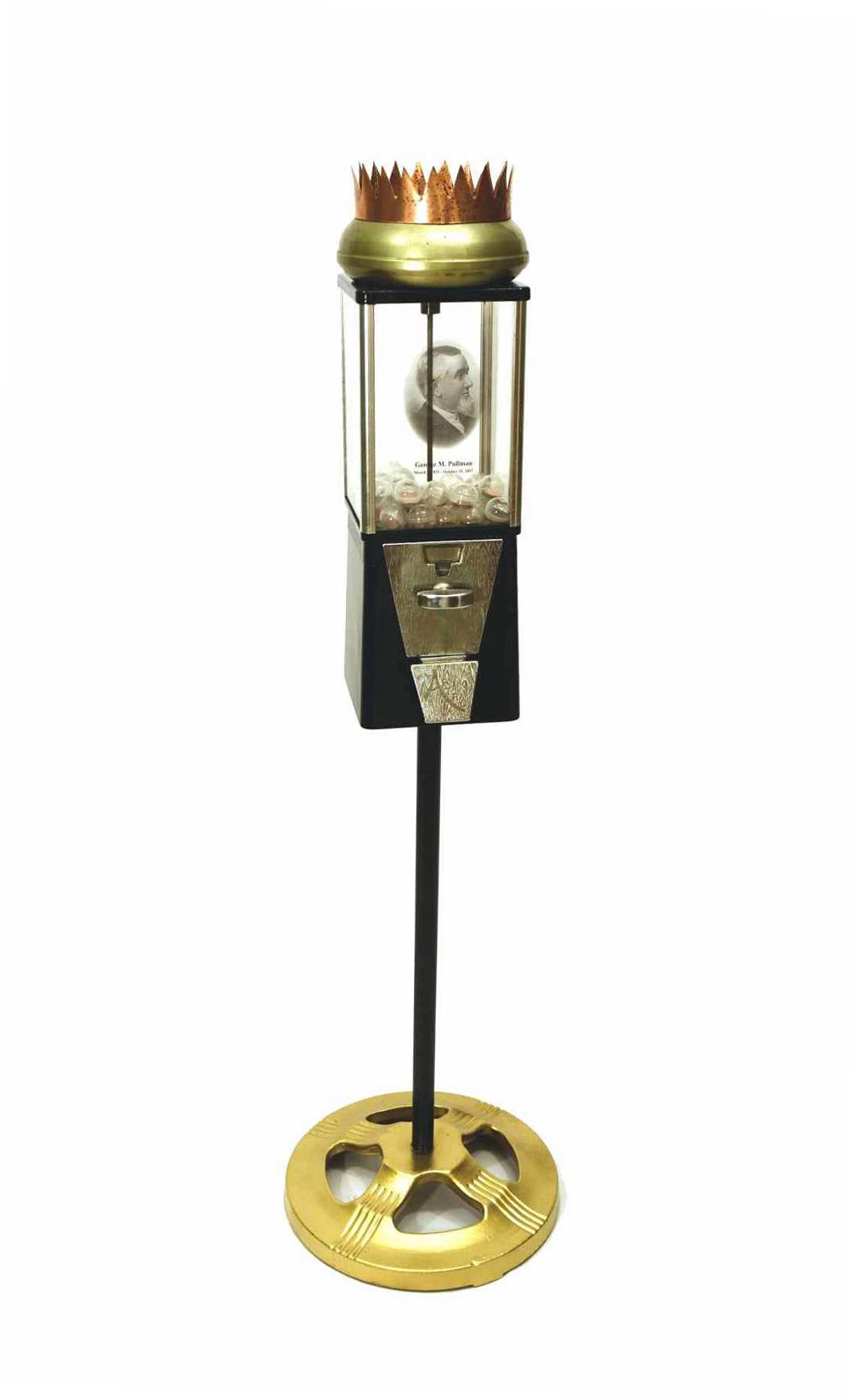
(working page)
Thank you to those who agreed to write about one of the above. Your voice is such an important part of this project. I'm so appreciative for your participation.
A few paragraphs or a few pages. It is up to you. Please let me know if you have any questions, input, or suggestions (or even a place you might like to see the project displayed).
I'm hoping to have the writing complete by Dec 15, 2023 or sooner. Please allow time for some back and forth (if needed).
Thank you again for being part of this project!
-JB
UPDATE 11/13/2023
Andy B. came by the studio today and suggested I offer “maker notes”.
So here's a little about the Gumball machines...
I had one of these gumball machines at the studio for years, always thinking there would be an art use for it someday. I loved the interactive nature, employing the mechanism, coins, and the idea of exchange - the perfect substrate for the Pullman Strike. It was an effort to locate more machines (and when found they were in very rough condition). Finding parts /repairing became an interesting and somehow meaningful aspect of the work. The coin mechanism operates with a dime or a token.
Some random things: Thinking individually and as a whole, meant working on more than one at a time. Each is a shade of red, white, or blue (with the exception of George). The gaze of the subjects go from left to right. The level of transparency in the top portion (which looks "in") intentionally varies from piece to piece. They can work in a row or may be placed to fill a room. Some move, some don’t. There is an implied front facing position but viewing from all sides is encouraged.
And some incidental / non-incidental notes on making each (that may or may not be of interest):
Debs - Made with american flags, union made buttons, and a portrait of debs looking left. This machine sits on a red carpet which the viewer also stands on as part of the interaction. Debs believed in the american dream of a better life, for everyone.
Jennie Curtis- The bottom portion consists of many yards of muslin, and wood from a factory worktable. One day was spent cutting the muslin into pieces (bottom). The next day and a half was spent cutting the previous day's quantity plus forty percent more (the approximate difference in pay from 1893 and 1894). That I could not find a verified picture of Jennie (this is the only piece without an image of the subject) speaks volumes.
Carwardine - The word “justice” appears in Carwardine’s book a notable number of times. The two offering/tiding bags (one on either side) form a “scale of justice”. Kerr Publishing and The Debs Foundation are reprinting Carwardine's book for the 130th anniversary (2024) of the Pullman Strike. The bottom portion of the stand is turned in such a way to form a cross (the others are not).
Pearls from Mayme Stanley - Mrs. Stanley was born in 1884 and lived her entire life in Pullman. She was 10 years old during the Pullman Strike and talks about that time in a 1987 tribune article (see link on her page). She died in 1989 at 105 years of age. I met Mrs. Stanley when I first moved to Pullman. Tutti-frutti (the gumball flavor choice for Mrs. Stanley's "prize") was the first flavor of gum used in a gum vending machine.
Altgeld - The 1894-96 pin back button on top of the Altgeld machine manufactured by Whitehead Hoag and was part of a Sweet Caporal Cigarettes promotion and features the Illinois State Seal. The state did not yet have a flag.
Jane Addams- I struggled with Jane until I came up with the idea of a wobble. Her footing is solid but allows for movement in all directions while remaining in place.
George - A bit of trimmed copper affixed to a genuine Pullman Palace Car spittoon takes the crown off “King Debs” and puts it on George with the addition of Jane Addams King Lear reference. On a tour of Graceland Cemetery, when we arrived at George's plot, the curator made a point of saying that folks from all over the world still come to spit on George's grave. George is looking right.
I’ll continue to update the pages as other suggestions and your writing comes in.
Thank you all again!
UPDATE 11/24/2023
Mike M's writing is in...
 Thank you Mike!
Thank you Mike!
The first piece from Jack K. is here...
 Thank you Jack!
Thank you Jack!
Had some friends from the Chicago History Museum and the Field Museum stop by the studio today. The project was very well received. We all concurred the ideal place/context to show the project would be in the sacred Hotel Florence. Not sure if that might be possible but will do some inquiring when the project is closer to completion.
Oliva G. made an interesting observation about the current use (and non-use) of surnames which has given me fodder for thought (thank you Olivia! your comments were well received).
Carrie I. has agreed to take on the project essay! I've been an admirer of Carrie and her work for years. She knows both my art and the subject. It is an exciting fit and am so grateful.
Please let me know if any of you need anything. Looking forward and thank you for engaging in this project.
UPDATE: 11/30/2023

Luther came for a studio visit. We talked for a couple hours about Carwardine, the role of the church, and "Justice". Luther and Andy are writing the Carwardine essay for the project. Studio is open for visits.
UPDATE 12/05/2023
Working on QR's


UPDATE 12/08/2023
Noel Beasley's writing on Debs is in...
 Thank you Noel!
Thank you Noel!
I've also added links on the page to the Debs Foundation, Historic Pullman Foundation, and Charles Kerr Publishing Co. about the publishing of the 130th anniversary of The Pullman Strike by Rev. William H. Carwardine.
UPDATE 12/14/2023
Ranger Lisa’s text on Mary “Mayme” Stanley is in!
 So interesting!
So interesting! Thank you so much Lisa for researching this life long Pullman resident that was actually here during the strike.
On a side note: Lisa also discovered that Mayme’s childhood home shares a common wall with the studio! Such a solid connection of place.
Andy found Carwardine’s grave and sent a picture! Can’t wait to visit.
 Thank you Andy!
Thank you Andy!
The 130th anniversary publication of The Pullman Strike by Rev. Carwardine is in progress. I read the introduction by Peter Cole and it is on target. It will be wonderful to have this book back in print (thanks to Charles Kerr Publishing, Eugene V. Debs Foundation and Historic Pullman Foundation)
Next week we are going to be in Kauai hiking and celebrating Makahiki. See you after the holidays! Thanks again for all your contributions to the project so far.
UPDATE 12/30/2023
Back and refreshed. Hope everyone had a great couple of weeks...
Andy's writing on Carwardine is in...
 Thank you Andy!
Thank you Andy!
Starting the list:
Additional Resources/Links
Newberry Library - Pullman: Labor, Race, and the Urban Landscape in a Company Town
https://digital.newberry.org/scalar/pullman/index
Northern Illinois University Digital Library
https://digital.lib.niu.edu/illinois/gildedage/pullman
Eugene V. Debs Foundation
https://debsfoundation.org/
Illinois Labor History Society
https://www.illinoislaborhistory.org/labor-history-articles/the-parable-of-pullman
National Park Service
https://www.nps.gov/pull/learn/historyculture/the-strike-of-1894.htm
Videos
The Revolutionist: Eugene V. Debs
https://www.wfyi.org/programs/debs
Pullman and the Railroad Rebellion
https://www.pbs.org/video/chicago-stories-pullman-and-the-railroad-rebellion-folez5/
Books
The Edge of Anarchy, Jack Kelly (a must read)
https://jackkellybooks.com/the-edge-of-anarchy/
The Pullman Strike: The Story of a Unique Experiment and of a Great Labor Upheaval, Almont Lindsey
https://press.uchicago.edu/ucp/books/book/chicago/P/bo3638803.html
The Pullman Strike and the Crisis of the 1890’s, Richard Schneirov, Shelton Stromquist, and Nick Salvatore
Online Books/Articles
Report on the Chicago strike of June-July, 1894 : with appendices containing testimony, proceedings, and recommendations
https://babel.hathitrust.org/cgi/pt?id=hvd.hb9xnj&view=1up&seq=5
The Pullman Strike, by Rev. William H. Carwardine
https://babel.hathitrust.org/cgi/pt?id=uiuo.ark:/13960/t87h1xj9d&seq=1
The Pullman Boycott. A complete history of the great R. R. Strike. By W. F. Burns
https://babel.hathitrust.org/cgi/pt?id=ien.35556031166119&seq=1
Live Questions, John P. Altgeld
https://librarycollections.law.umn.edu/documents/darrow/Altgeld_livequestions.pdf
If Christ Came to Chicago!, A Plea for the Union of All who Love in the Service of All who Suffer, By William Thomas Stead, 1894
https://www.google.com/books/edition/If_Christ_Came_to_Chicago/W4IXAAAAYAAJ?hl=en&gbpv=1
Satellite Cities, A Study of Industrial Suburbs, by Graham Romeyn Taylor
https://www.google.com/books/edition/Satellite_Cities/Aj9HAAAAIAAJ?hl=en&gbpv=1
"Pullman: A Social Study," by Richard T. Ely
Illustrations by C. Mente from Architect's plans.
Harper's Monthly Magazine, vol. 70, whole no. 417 (Feb. 1885), pp. 452-466.
https://archive.org/details/8502ElyPullmanasocialstudy/page/n2/mode/1up
Other books/links (not directly related to the strike but giving incredible context)
Progress and Poverty by Henry George
https://babel.hathitrust.org/cgi/pt?id=uiug.30112037266217&seq=9
Looking Backward, 2000 to 1887 by Edward Bellamy
https://babel.hathitrust.org/cgi/pt?id=hvd.hb0hrv&seq=9
News from Nowhere by William Morris
https://babel.hathitrust.org/cgi/pt?id=uc1.c092706276&seq=5
The Jungle, By Upton Sinclair
https://www.google.com/books/edition/The_Jungle/b7QpAAAAYAAJ?hl=en&gbpv=1&pg=PP9&printsec=frontcover
I'm sure this list will expand as I've barely scratched the surface here but I don't want to overwhelm and have kept to a minimum. Please let me know if you would like to add something!
UPDATE 01/08/2024
Ruth's text is up
 on Jennie Curtis. So good!
on Jennie Curtis. So good!
A short excerpt from the first piece of feed back received, by Jane B: "... I love so much about this project- the immediacy of capitalist consumption in the objects themselves- spend and receive on such a small scale- and the simultaneous antiquity and modernity of the machines themselves. I love the storytelling for all of these diverse characters is still rooted in these mechanical, capitalist (and materially hard, linear, and cold) objects. The choice to pair them with cleverly constructed softer elements that create the character of each individual installation- and such different characters at that- is really compelling..."
Here is a link to what will be the public pages of the project (the pages with the essays are included and will also link via QR codes). This will be updated as more comes in but feel free to share now: www.jbdaniel.com/gumballproject.html
Rebecca said when she went to the site a not-secure message showed up. I have added a ssl certificate to the site so this should be resolved shortly.
UPDATE: 01/29/2024
Cathi S. came for a studio visit last week and we kicked around a few possible venues/institutions that might be interested in hosting the project. Such a pleasure this person is. Thank you Cathi.
Carrie’s writing for the introduction is coming soon!
We have our first venue!
 The project will be part of the Chicago Humanities Festival (Spring 2024) shown at Illinois Institute Of Technology. Thank you to Lauren P. for coming out to the studio and her unending support of the arts.
The project will be part of the Chicago Humanities Festival (Spring 2024) shown at Illinois Institute Of Technology. Thank you to Lauren P. for coming out to the studio and her unending support of the arts.
And with that, the idea of the Gumball Project traveling around this year (2024 marks the 130th anniversary of the Pullman Strike) I’ll be working on a “pop up” version that will be an easy install/de-install to accommodate short term exhibits (day, week, month).
Kerr Publishing says the 130th anniversary edition of “The Pullman Strike” will be ready to ship in February! I’m so excited that this book will be available again. Bravo to all involved that are making this happen.
Update: 02/08/2024

The project is slated for exhibition in PULLMAN for a full year at the HPF exhibit hall in concert with the Pullman Strike exhibit. I am delighted to work with the professional team there. We have even allowed for short term removal of the installation so it may be shown other places as well. Looking forward to a May opening!
Carrie’s introduction essay for the project is in! Offering a wonderful frame to look through. Thank you Carrie. Read here: https://jbdaniel.com/gumballessay.html


Historic Pullman Foundation (HPF) Julian, Rebbeca, and Andy stopped by the together house to take a look at strike related artifacts from the guest room collection for possible inclusion in the Pullman strike exhibit.


A new piece for the project is being considered for display at the Pullman clock tower. Meeting with Lisa and Sue from the National Park Service (NPS) next week.
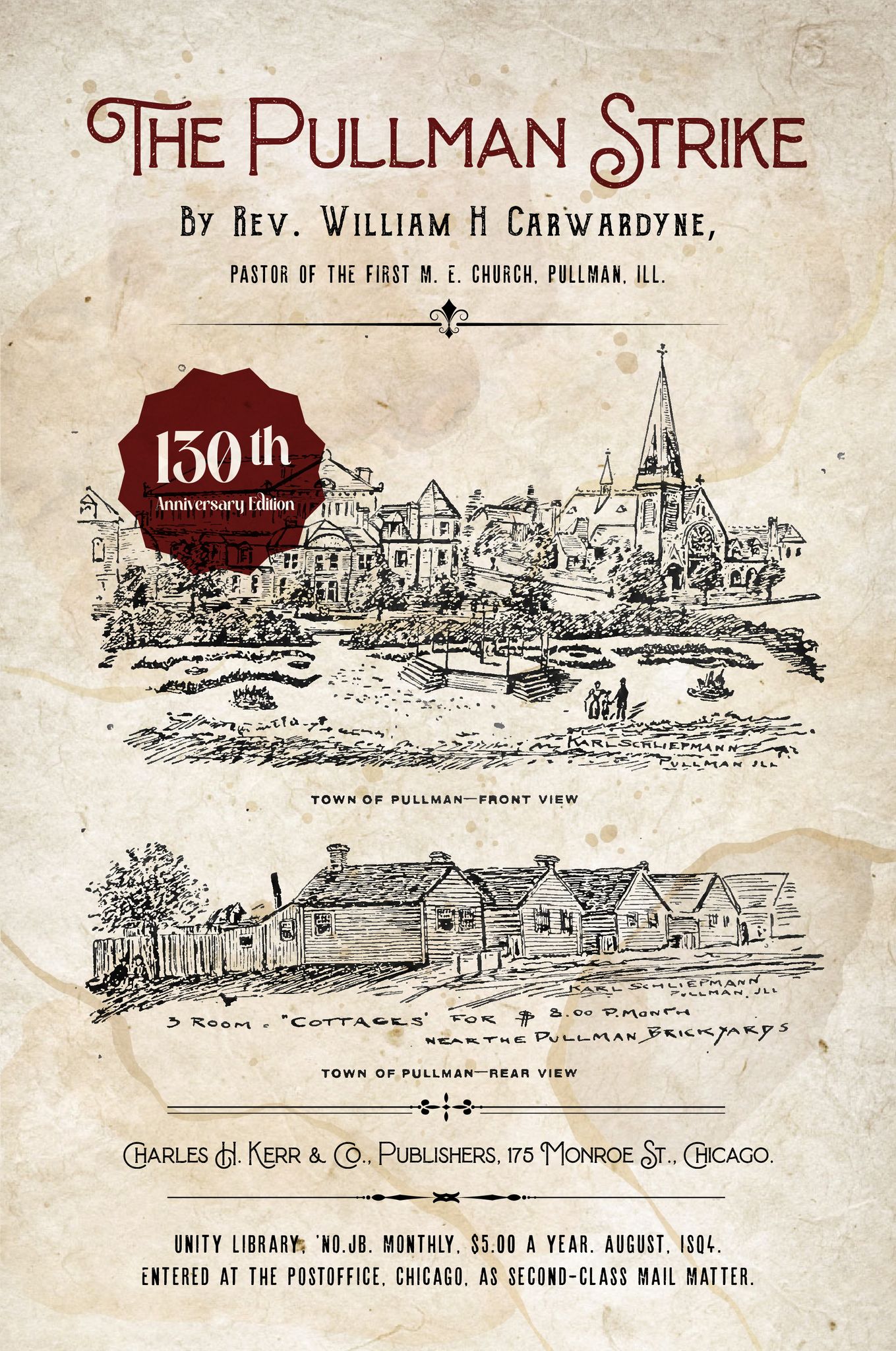
The Carwardine books are printed and have shipped! The 130th anniversary edition of The Pullman Strike by Rev. William H. Carwardine, republished by the original publishers (thank you Charles H. Kerr!). Books will be available from: The Eugene V. Debs Foundation, Charles H. Kerr Publishing, and the Pullman National Historic Park NPS gift shop. (I might have a few at the studio as well)
Update: 02/15/2024
Rev. Luther Mason’s essay on Rev. Carwardine is in!
 Thank you Luther for this insightful look at how the work continues.
Thank you Luther for this insightful look at how the work continues.


National Park Service (NPS) in the studio! Lisa and Sue were at the studio today to talk about the satellite exhibit at the Pullman Clock Tower. After some conversation, discussion, and shortbread girl scout cookies… it’s a go! "The proposed installation includes two “life-sized” vending machines reimagined as Eugene V. Debs and A. Philip Randolph employing historical artifact references in a narrative of solidarity." (in progress)
UPDATE: 03/01/2024
The NPS Clock Tower satellite exhibit, working title: “Camaraderie”
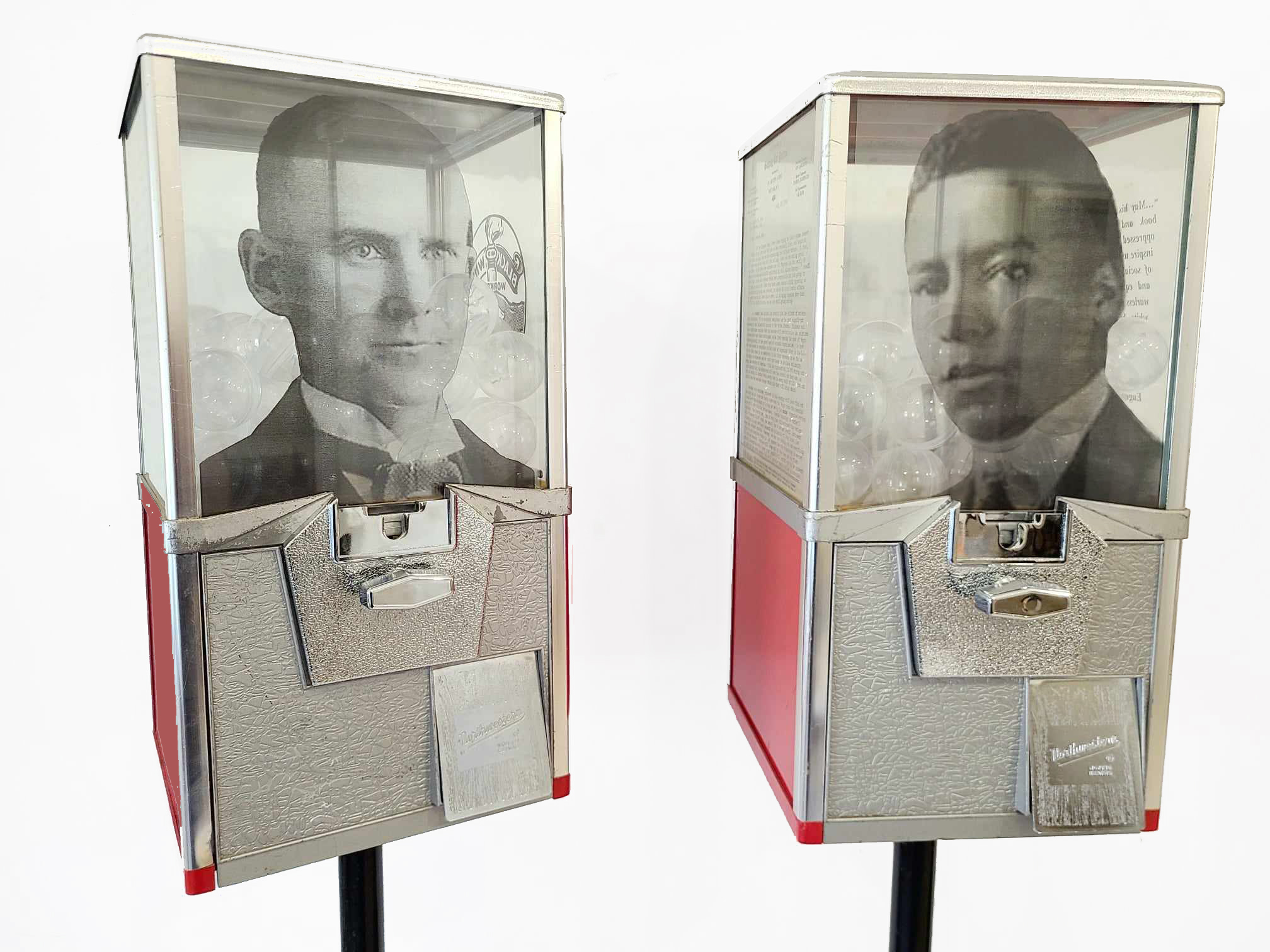


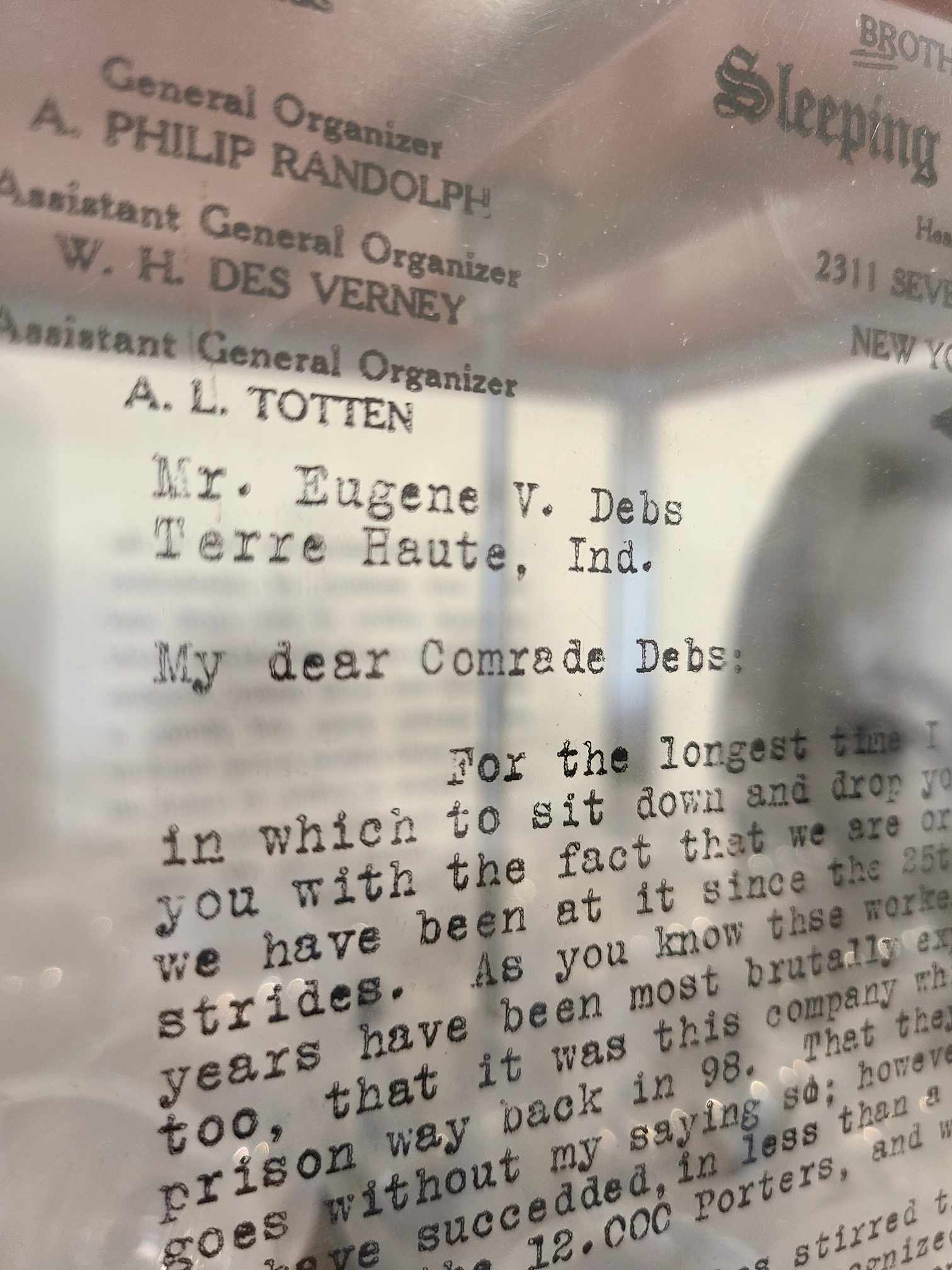
Thanks to John Morahn from the Debs Foundation and author/historian Jack Kelly for pointing me to additional source materials for “Camaraderie”. I’ve also reached out to David Peterson at the National A. Philip Randolph Pullman Porter Museum and look forward meeting with him soon.
As Randolph states in the beginning of “Our Reason for Being,” (Messenger, August 1919, 11–12.):
“First, as workers, black and white, we all have one common interest, viz., the getting of more wages, shorter hours, and better working conditions. Black and white workers should combine for no other reason than that for which individual workers should combine, viz., to increase their bargaining power, which will enable them to get their demands.
Second, the history of the labor movement in America proves that the employing class recognize no race lines. They will exploit a white man as readily as a black man. They will exploit women as readily as men. They will even go to the extent of coining the labor, blood and suffering of children into dollars. The introduction of women and children into the factories proves that capitalists are only concerned with profits and that they will exploit any race or class in order to make profits, whether they be black or white men, black or white women or black or white children…” (1)

The graphic included at the beginning of the article (see above) also appears on the front cover of a pamphlet publishing Debs address at the Commonwealth Casino where James Oneal, A. Philip Randolph, Lucille Randolph, and Judge Jacob Panken opened (see below).
While “divide and conquer” was (and is) an effective tool in the exploitation of the working class, these two men (Eugene V. Debs and A. Philip Randolph) knew the power of solidarity.
Debs fought hard to include black workers in the American Railway Union (ARU), not an easy road in an 1893 racially divided America. He came remarkably close to achieving that goal but in the end the white workers excluded Black membership (by 2 votes). Debs later said:


“When we were organizing the American Railway Union in 1893, I stood on the floor of that convention all through its deliberations appealing to the delegates to open the door to admit the colored as well as the white man upon equal terms. They refused, and then came a strike and they expected the colored porters and waiters to stand by them. If they had only admitted these porters and waiters to membership in the American Railway Union there would have been a different story of that strike, for it would certainly have had a different result.” (2)
Jump forward thirty-some years after the Pullman Strike and the Brotherhood of Sleeping Car Porters lead by A. Philip Randolph asks Mr. Debs (in a letter) to be the “keynote speaker” at the first national convention of the newly formed organization (still in secrecy):

July 16, 1926
“Mr. Eugene V. Debs, Terre Haute, Ind.
My dear Comrade Debs:
For the longest time I have been trying to find a spare moment in which to sit down and drop you a few comradely lines, and acquaint you with the fact that we are organizing the Pullman Porters. In fact, we have been at it since the 25th of Aug: last and are making rapid strides. As you know the workers are all Negroes, who for nearly 59 years have been most brutally exploited by the Pullman Company. I recall too, that it was this company which was responsible for your going to prison way back in 98. That they have been rather rigidly opposing us goes without my saying so; however, in spite of their frantic efforts we have succeeded, in less than a year, in bringing together more than 65% of the 12,000 Porters, and we are still going strong.
Our movement has stirred the country like few efforts of workers ever did before. It is recognized everywhere as the most significant movement on the industrial horizon of the United States. Thinkers and labor historians realize that our success will revolutionize the relations between white and black workingmen, aside from opening the eyes of Negro workers generally to the great need of economic organization. We know how wide spread is prejudice in the ranks of organized labor in the U.S. we know that there is no democracy in the labor movement in so far as the Negro is concerned and we know that there is no class solidarity among the workers of America. With our organization, 12,000 strong and intelligently led, and scattered all over the country as they are, as well as coming in contact with every body in every walk of life, you can readily see the decided change which this fact will bring about.
Besides, the employing interest in this country will soon find out that they can no longer do freely draw upon the Negro race for recruits to beat down the standard of living as set by the organized workers. As you will note from our letter-head, Comrade Randolph is our Gen’l. organizer. The Company had, for a long time chloroformed the Porters with a "Company Union” which, as usual, was a rather useful instrument in keeping the men smothered beneath an avalanche of long hours, low wages and subdued manhood. However, we are now coming out and everything points to our complete victory. At present we are organizing in secret for obvious reasons. Soon we will come out in the open at our first national Convention when I hope your health will permit you to be present and make the key note speech. You will receive ample notice in advance.” (3)
Forty some years later, A. Philip Randolph himself would be the “keynote speaker” at the Debs Foundation’s yearly award dinner as the recipient of the 1967 Eugene V. Debs Award (4). His speech ended with these words about Debs:
“May his memory ever live in the book and memory of numberless oppressed toilers of this earth and inspire us to march forward to a world of social and racial justice, freedom and equality, peace and plenty, a warless world without racism, black or white, brown or yellow, in which all men are recognized as members of one common human family, with respect for the dignity and worth of their personality. Such was the dream of Eugene V. Debs.” (artist note: I believe this dream was shared by both men)
These two leaders intertwined over the decades, with mutual admiration and comradery, often speaking at the same events in a shared vision of a just and equal world through solidarity.
(1) A. Philip Randolph “Our Reason for Being,” (Messenger, August 1919, 11–12.) https://www.marxists.org/history/usa/pubs/messenger/1919-08-v2n08-aug-Messenger.pdf
(2) Debs Address https://babel.hathitrust.org/cgi/pt?id=inu.32000007367214&seq=5 (published by Randolph)
(3) Letter to Debs from the Brotherhood of Sleeping Car Porters (Indiana University)
(4) A. Philip Randolph’s award speech https://shawngude.substack.com/p/a-philip-randolph-at-the-1967-debs
Links:
The Messenger - archive https://www.marxists.org/history/usa/pubs/messenger/index.htm
Appeal to Reason - archive https://www.marxists.org/history/usa/pubs/appeal-to-reason/
National A. Philip Randolph Pullman Porter Museum - https://aprpullmanportermuseum.org/
The Eugene V. Debs Foundation and House Museum - https://debsfoundation.org/
UPDATE: 03/21/2024

Webpage started for Camaraderie with two new links
“Eugene Debs Believed in Socialism Because He Believed in Democracy” by Shawn Gude - https://jacobin.com/2020/09/eugene-debs-democracy-antiwar-canton
“You Should Know More About A. Philip Randolph, One of America’s Greatest Socialists” by Paul Prescod - https://jacobin.com/2020/05/a-philip-randolph-socialist-civil-rights-march-bscp
UPDATE: 04/24/2024
Exhibit props for text and essays is underway at the studio...



Now Available!

 Awww... special thanks back Charles H. Kerr Publishing !
Awww... special thanks back Charles H. Kerr Publishing !
The Pullman Strike 130th Anniversary Edition
by Rev. William H. Carwardine
New introduction by Peter Cole
Paperback: $18.00
During the heroic Pullman strike and boycott of 1894, a young Methodist minister defied the conventions of company-town self-censorship by writing this searing expose of the dictatorial and penny-pinching regime of multimillionaire George M. Pullman. That Rev. William H. Carwardine suffered immediate exile from his Pullman church suggests how deeply threatened the giant railroad manufacturing and operating company was by his plainly written book.
On the 130th anniversary of the Pullman Strike, Carwardine's volume—here reissued by its original publisher—remains a classic of labor journalism, industrial history, and strike-support activism. This special anniversary edition includes a new introduction by Peter Cole, as well as the extensive and long out of print 1973 introduction and bibliography by Virgil J. Vogel.
Purchase: Charles H. Kerr Publishing (Online)
Available Soon: Eugene V. Debs Foundation (House Museum Gift Shop and Online)
Available Soon: Pullman National Historical Park (Gift Shop)